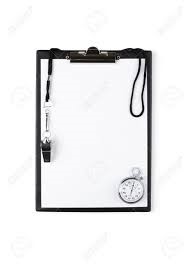How long does it take to complete a task?
For work processes, direct or indirect, “How long” is perhaps the most crucial piece of operational data. Work measurement, by direct observation, with time and motion study and perhaps work sample will quantify the time involved, plus lost time, interference and waste, constraints, unbalanced workloads. It can support employee incentive programs such as piece rate, piece work.
Work measurement through direct observation will identify activities which could be performed by people with lower and more available skill levels, and poor or even unauthorized procedures. It can as well zero in on details for the current manufacturing issue.
JPR practices work measurement, and can lead instruction.
Quantify the Required Time to Perform a Function; Direct or Indirect
As a basis for vital company systems, standard costing, capacity, efficiency, productivity, utilization, staffing, scheduling, and cost justification, it’s best to get the times right.Evaluate Overloaded and Underloaded Jobs – Balance Lines and Workloads Observe and measure time required for labor or equipment activity to resolve workload issues objectively. Changes in job content and the timing of assignments lead to quick and effective workload balance and better labor efficiency.
Update Old Rates and Standardize Practices
Methods, equipment, and technology evolve over time so that older rates become inaccurate. Use a time study to update; observation routinely finds that methods and practices for similar activities vary by location.Identify Non-Value-Added Work
Observation often reveals preventable waste, lost time, and productivity-killing activities. Study the constraint, particularly whether it is paced by machine or manpower elements. Keep the constraint loaded. In keeping with the classic mandate of “don’t improve, remove,” eliminate non-value-added activity, and you’ll be able to pare crew sizes and/or increase production.Remove Low-Skilled Tasks from Skilled Positions and Allow Workers to Spend Time on Their Special Talents
If a shortage of skilled labor is an issue for your business, work measurement is a key tool. Observe and time your skilled workers to identify wasted time and the lower-skilled tasks that are assigned to them. Then, eliminate the waste, and assign the lower-skilled tasks to less skilled employees. In other words, free up your skilled workers to use their talents.Prepare for Union Contract Negotiation – Know Precisely What the Activity Level Is, Especially in Machine-Paced Operations
Objective study informs both the company and union about real, not perceived, labor workloads. Observation quantifies workloads, whether too high, too low, or just right. Effective corrections can include equipment and technology acquisition, work reassignment, layout change, and timing revisions.Identify Time-Consuming Elements of Labor Content
• A hotel wanted to determine the expected time to change a room when a guest departed. Our study did that and also told the client that some of their luxury room features, glass and marble, for instance, required substantial time to clean. Also, reducing the number of pillows saved literally minutes on a room change.
• A manufacturer believed their construction products could be installed more quickly than a competitor’s. Time study verified the claim, and it was subsequently featured in ads.
• Educate Your Educated Guesses
Businesses make decisions based on the best available data. Employ work measurement studies to generate objectives and report current results.
• Confirm with management that a particular level of performance has been achieved and that the next project phase can begin.
• Quantify current output, activity levels, lost time, and workload balance.
• Inform management, when manual assembly doesn’t attain as low a cost as simple mechanization.Find and Fix Production Constraints
What is causing the output delay, and how can we fix it? Typically, observation and the watch locate constraints quickly, and then options can be evaluated.What’s Next?
Is there a single, straightforward answer for all, or perhaps the majority, of work measurement projects? Obviously not. Since no two operations have the same goals or techniques, work measurement projects are not the same. There is no such thing as a one-size-fits-all solution.For instance, a formal system of work measurement, could be “Incentives,” “Piecework,” or “Reasonable Expectations” (RE). And production floor problem solving doesn’t need a formal program for success.
Incentives or piece rates motivate people, but rate-setting effort, record-keeping, and reporting will increase. REs will often result in more labor hours per unit than incentives but less than an unmeasured situation. RE admin costs will be lower than incentives, although the accuracy of the rates will be rigorous enough to support management systems.
Contact us today with any work measurement questions, concerns or potential improvement. Email jack@jacksonproductivity.com, or call 843-422-1298..
Work Measurement



